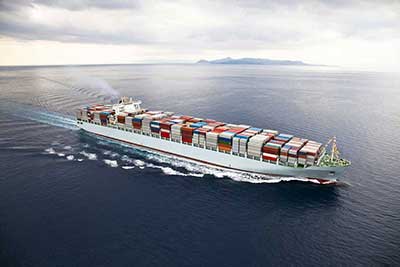Relevance: GS-3: Infrastructure: Energy, Ports, Roads, Airports, Railways etc.
Key phrases: Safe manning, DG shipping
Why in news?
DG Shipping to crack the whip on ships violating safe manning norms.
Analysis:
India’s shipping status
- India has 13 major ports and 200 notified non major ports-major ports administered by Union under Major Ports Trust Act 1963 except Ennore port (Companies Act).
- Cargo traffic increased at CAGR 7.4% during 2007-2017
- Major traffic chunk shifting to non-major ports- now 45% of total as 28 % in 2007
- 100% FDI in shipping sector under automatic route
- PM has conceptualized Arth Ganga for waterways
Importance of shipping
- Vast coastline of 7500km-95% of country’s trade by volume on sea-important for economic growth
- Important for integration into global economic system as ports are primary component of general transportation sector - Cargo traffic in the country is expected to rise to 2,500 MT by 2024-25
- Enhancement of blue economy through fishing, tourism and passenger support
- Ports as a key component of the logistics chain: Their operation has direct impact on economic variables: such as export competitiveness and final import prices,
- Ease of doing business as ports with high capacities to handle import and export with low turnaround time and fast clearance time are essential
Issues plaguing the sector
- Government owned ports run as trust and follow obsolete service port model-leads to conflict between port trust and private sector
- Major port trusts also carry out terminal operations leading to hybrid model
- High turnaround times for ships. For example, in Singapore, average ship turnaround time is less than a day. However, in India, it is over two days
- Ports not equipped to handle large containers and ships are rerouted leading to increased cargo cost - India dependent on Colombo as transshipment hub-political cost
- Major problem with regulation is that major and non-major ports fall under different jurisdictions. Further, the regulatory framework is rigid-restrictive cabotage laws. (Cabotage rights are the right of a company from one country to trade in another country)
- Spillage or leakages from the loading and unloading of cargo and
pollution from oil spills are common due to poor adherence to environmental
laws and standards
Government efforts - Union cabinet has approved a new Model Concession Agreement (MCA) for private public partnership (PPP) port projects- payment of royalty for the ports will be now on ‘per million tons of cargo handled’ instead of percentage of gross revenue based on tariff
- Major Ports Authorities Act, 2016: -The Act seeks to provide greater autonomy and flexibility to major ports-provides adjudicatory board also-2020 amendment aims to enhance decision making power even more
- Approval for setting up a Major Port at Vadhavan-landlord model - India’s biggest container port
Way ahead
- Create 4 to 6 mega ports in next 20 years-3 on each coast-NTDPC committee
- Digital transformation in shipping: Through technologies such as Internet of Things(IoT), Blockchain, Machine Learning, Artificial Intelligence (AI), Analytics,
- Complete relaxation of cabotage: To enhance shipping capacity for coastal movement and facilitate availability of adequate vessels at lower cost
- Level playing field by rationalizing indirect/direct taxes and restrictive policies









